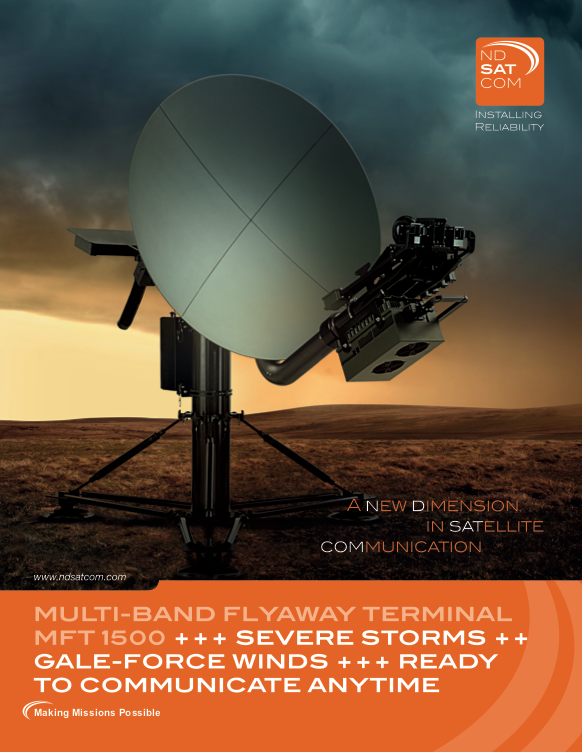The Future of Communicatins Starts Now
Intelsat has updated the Federal Communications Commission (FCC) with their “final report on its C-band transition.” One of the 601-page document’s major elements is the listing of each of the company’s clients and their Earth stations and which of them elected to take cash from Intelsat for their local filter work rather than allowing Intelsat to undertake the tasks. There are a few significant changes to previous issues of Intelsat’s report, not the least of which is the cost of buying the new satellite fleet.

“Undertaking the clearing of C-band spectrum is a monumental technical, operational and commercial task layered with highly interdependent activities,” said Michelle Bryan, Intelsat’s Secretary EVP/General Counsel, in her letter to the FCC.
The document was issued by Intelsat License LLC which stated that the construction of seven new satellites in order to “effectuate” spectrum clearing was well underway, with all contracts being finalized. The cost for the C-band payloads on the new satellites needed for the transition is estimated to be $790 million (or $113 million per satellite). Launch and insurance costs are stated as $390 million. The total cost of Intelsat’s C-band replacement satellite portion within its Transition Plan, including launch, insurance and program management, is estimated to be $1.18 billion. Add in the Customer Migration costs ($350 million), Teleport Migration costs ($95 million), Intelsat Program Management ($15 million) and the overall total mounts up to $1.64 billion.
Intelsat stated that this final bill covers 11 principal customers and 10,000 affiliates, two Teleports, 18 antennas and the already mentioned Program Management costs.
Thousands of Intelsat (and SES Americom) customers have had individual requirements identified. “To achieve the timeframes specified in the Report and Order, Intelsat must create a ‘non-commercial’ balance of satellite capacity, compression gains, migration activities and ‘same or better services’ to clear the 300 MHz required. The accelerated deadlines create the immediate need to ‘spread’ programming in the upper 200 MHz across all current cable-/ broadcast-penetrated satellites, rather than pursuing the previous densification strategy of fewer orbital locations utilizing all 500 MHz. Spreading the content requires the launch of an increased number of partial replacement satellites, as compared to Intelsat’s pre-C-band proceeding plan that would have required the launch of fewer, more densified satellites,” says the document.
“The Intelsat satellite replacement plan is focused on the ten station-kept Galaxy satellites that contain C-band payloads in the North American arc. The C-band payloads on these ten Galaxy satellites currently use 500 MHz of C-band spectrum configured as 24 x 36 MHz transponders, with 12 transponders in each linear polarization (horizontal and vertical). These C-band payloads are used to distribute video, radio and data services to thousands of receive sites across North America and the Caribbean. The ten C-band payloads are broadly separated into two categories or applications, with the payloads not generally being interchangeable between the two applications,” the document adds.
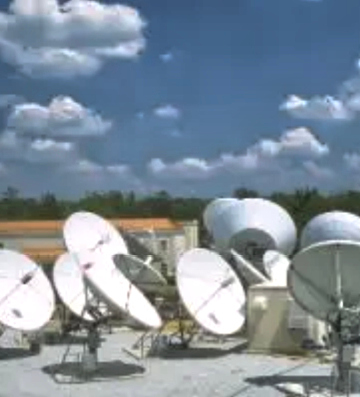
Intelsat’s Atlanta teleport, with 68 antennas supporting access to
AOR and CONUS satellites with connectivity to a global network of
commercial teleports and fiber paths to major city PoPs — located
20 miles (32 km.) southeast of Atlanta, Georgia.
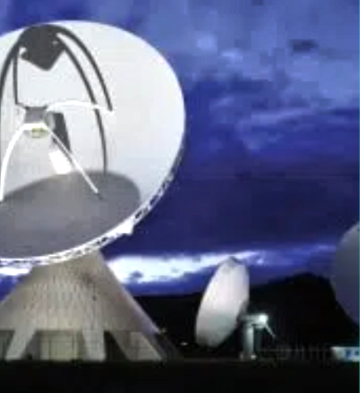
Intelsat’s Fuchsstadt teleport, with 80+ antennas connecting three
oceans and providing service to five continents — redundant fiber links
to all other Intelsat commercial teleports and POPs | Located 80 miles
(120 km.) east of Frankfurt, Germany
Four of the new satellites are coming from Maxar, while two are on order from Northrop Grumman. One spacecraft supplier remains yet to be determined.
Today, five of the six C-band payloads above are used for Distribution services to cable affiliates. The sixth, Galaxy 23, provides Restoration services for the majority of the cable customers who hold contractual rights for service restoral if a partial or full satellite failure occurs. In light of this critical restoration use and customer requirement, most services on Galaxy 23 currently are sold on a pre-emptive basis – i.e., those customers can be pre-empted if there is a transponder or spacecraft issue on another Galaxy C-band payload that creates the need to restore services on Galaxy 23.
“Four of the six cable arc C-band payloads will need to be replaced to meet the FCC’s accelerated spectrum clearing timeframe. The replacement C-band payloads for Galaxy 13, Galaxy 15, Galaxy 17, and Galaxy 23 will provide Distribution services. For clarity, the replacement for Galaxy 23 will convert that orbital location from a Restoration role into a Distribution role. Galaxy 15R, Galaxy 17R and Galaxy 23R will be designed with 10 x 36 MHz transponders in the upper 200 MHz of the C-band. Galaxy 13R will be designed with 24 x 36 MHz transponders. The upper transponders will be used for Distribution services in CONUS, and the lower transponders will be used for Alaska, offshore and other non-CONUS services,” said the filing.
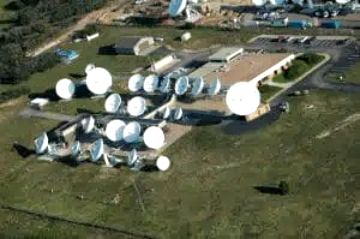
Intelsat’s Castle Rock teleport, with 26 antennas supporting access to
and satellite operations for POR and CONUS satellites — located 45
miles (72.42 km.) southeast of Denver, Colorado 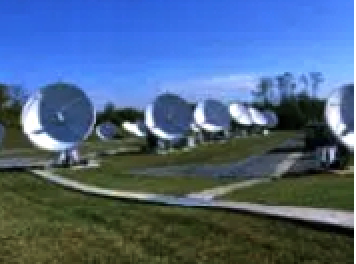
Intelsat’s Hagerstown teleport, with more than 50 antennas supporting
access to the AOR and CONUS satellites — redundant fiber links to all
other Intelsat commercial teleports and POPs | Located about 70 miles
(112.65 km.) northwest of Washington DC, in Hagerstown, Maryland.
The first pair of satellites are being manufactured by Maxar and will replace Galaxy 23 and Galaxy 17. The pair of Maxar satellites will be posted to their orbits via a single launch vehicle and the satellites are expected to be in service by Q3/2022, and that is when Intelsat plans to finalize the launch vehicle contract for these two satellites.
The second pair of satellites will be manufactured by Northrup Grumman and will replace Galaxy 12and Galaxy 15. The third pair of satellites will be manufactured by Maxar and will replace Galaxy 3C and Galaxy 28. The pair of satellites will be launched on a single launch vehicle and the satellites are expected to be in service by Q4 2022.
Intelsat says the company is currently evaluating proposals for Galaxy 13R from multiple satellite manufacturers and plans to start the program in September of 2020. Intelsat plans to finalize the launch vehicle contract in tandem with the satellite manufacturer decision. As is commercially standard, cost, schedule availability, and vehicle reliability will be the key determining factors in vendor selection. Intelsat plans to have Galaxy 13R in service by December 5, 2023.
“Given the added complexity at these earth stations, Intelsat and SES have agreed to coordinate some of the commonly required activities. Both operators will take individual responsibility for their antenna seeding plans, for their customer compression upgrades and for any other customer specific work required at an Earth station. After the customer migrations are completed,
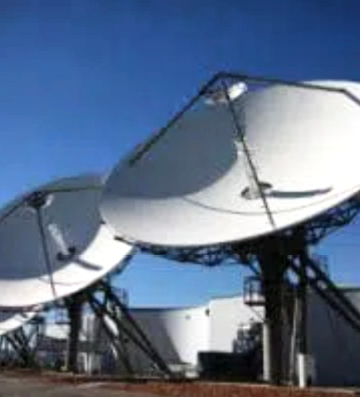
Intelsat’s Fillmore teleport, with 18 antennas delivering custom
network and media services. Located 65 miles (90 km.) northwest
of Los Angeles, California. 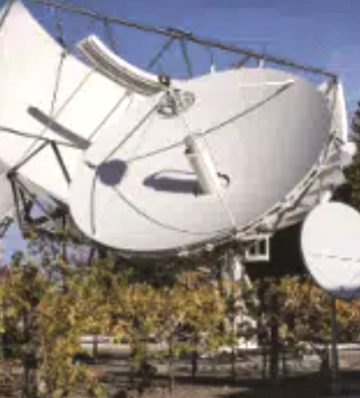
Intelsat’s Napa teleport, with 24 antennas supporting access to
POR and CONUS satellites — redundant fiber links to all other
Intelsat commercial teleports and PoPs — located 50 miles
(80.47 km.) northwest of San Francisco, in Napa, California.
Intelsat and SES have agreed to coordinate filter installation for incumbent earth stations located at cable head-ends and any other incumbent Earth station sites that have antennas accessing both Intelsat and SES satellites. Such coordination will minimize the burden on the Earth station technical staff and will reduce the risk of issues occurring during the filter installation process,” added the Intelsat notice to the FCC.
Intelsat said the firm has been preparing for the implementation of C-band spectrum clearing for more than two years and is well positioned to take the actions necessary clear within the designated timeframes.
Intelsat’s assembled internal team consists of over 50 full-time employees focused on the clearing initiative. “The team is comprised of strong, senior leaders dedicated to the program, complemented by world-class partners from across the industry,” stated Intelsat.
Effective program management is vital to the success of the C-band clearing. Intelsat has contracted with a third party to develop a program management function that will support the leaders of each of the work streams identified in this Transition Plan. The program management office will have the following responsibilities:
» Development of the Transition Plan program milestones
» Project tracking and reporting
» Financial analysis and reporting
» Interface to the Relocation Payment Clearinghouse
» Interface to the Relocation Coordinator
Intelsat expects that the program office will remain in place through the end of the Transition Plan milestones identified in this section. The office’s functions will include certifying to the Relocation Coordinator that the spectrum milestones have been met and closing out any cost reimbursements with the Relocation Payment Clearinghouse. The cost for management of the program is estimated to be $35 million over the Transition Plan period.
The full PDF document may be read at this direct link...

Author Chris Forrester is a well-known broadcasting journalist, industry consultant and Senior Columnist for SatNews Publishers. He reports on all aspects of broadcasting with special emphasis on content, the business of television and emerging applications. He founded Rapid TV News and has edited Interspace and its successor Inside Satellite TV since 1996. He also files for Advanced-Television.com. In November of 1998, Chris was appointed an Associate (professor) of the prestigious Adham Center for Television Journalism, part of the American University in Cairo (AUC), in recognition of his extensive coverage of the Arab media market.


